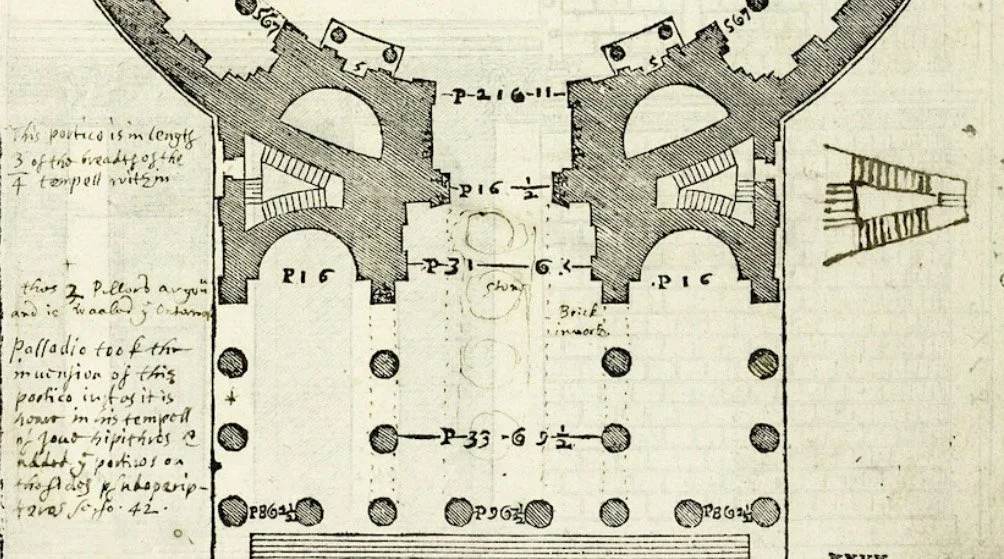Dr. Gordon Higgott, talks about Inigo Jones and his analysis of the Pantheon in Rome.
During his seventeenth-month tour of Italy with Lord Arundel, Inigo Jones (1573–1652) travelled to Rome in late December 1613 and stayed there two months before visiting Naples and returning to Rome for a few weeks in May 1614. He visited the Pantheon at least twice and studied this building more closely than any other ancient Roman monument. His comments, written alongside the woodcut illustrations in his copy of Palladio’s I Quattro Libri dell’Architettura (Venice, 1601), are remarkably acute in their observations on the history of the fabric and its interior decoration. Jones was then 40, and mostly skilled in stage design rather than architecture. He had been studying architecture for over five years, mainly through reading and annotation, and in 1613 had been promised the post of Surveyor of the King’s Works. Trained as a painter, draughtsman and joiner, he had an eye for surface detail, materials and moulding profiles. His notes at the Pantheon are a vital historic record of many lost original features and reveal aspects of Jones’s ‘mind-set’ as an architect which help us understand his achievement in two of his most celebrated works: the Banqueting House, Whitehall (1619–22), and his classical restoration of St Paul’s Cathedral, with its great west portico (1633–42).
Dr Gordon Higgott is an independent architectural historian specialising in architectural drawings and design practice in early modern Britain. He has published widely on the work of Inigo Jones and on the drawings of Sir Christopher Wren and his office for St Paul’s Cathedral, Greenwich Royal Hospital, Hampton Court Palace and Westminster Abbey. For many years he was a historic buildings inspector and historian at Historic England. He is currently preparing a new critical edition of Inigo Jones’s annotated copy of Palladio’s I Quattro Libri dell’Architettura (Venice, 1601) at Worcester College, Oxford.
To view the recording of this talk, click here.

